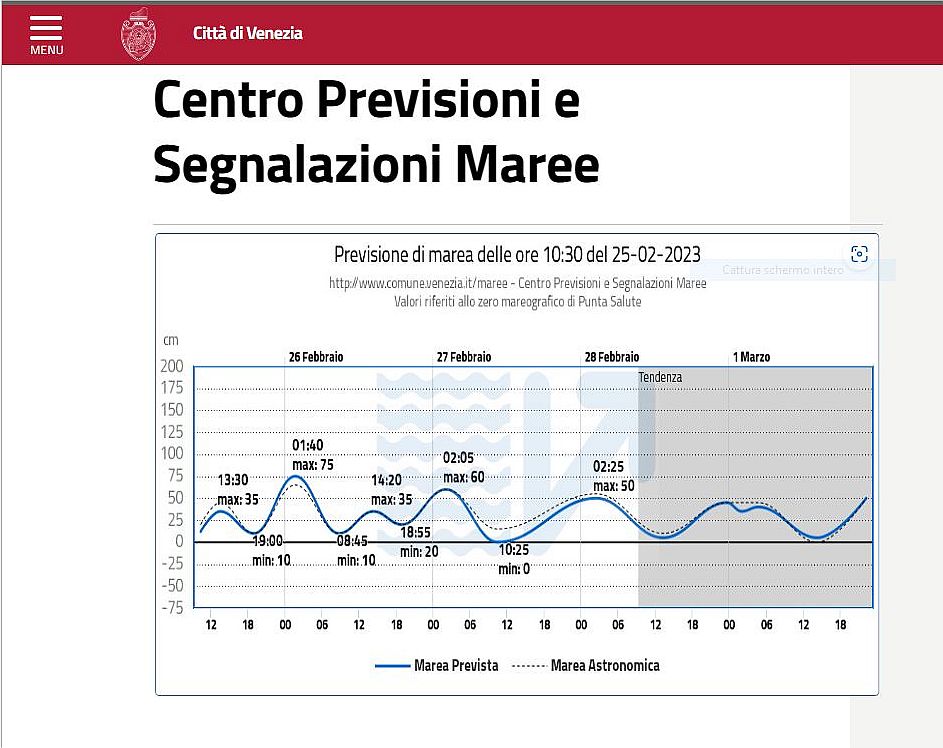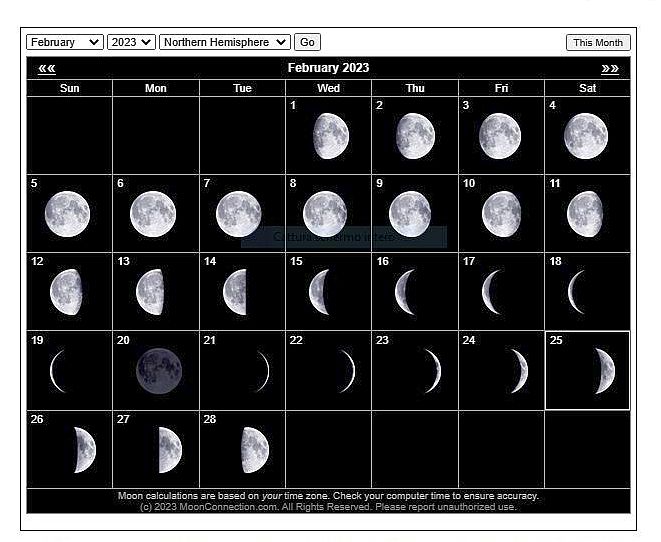Returning to the topic of the Venetian tides, which scared everybody because it seemed as if they had lost their mind — or minds. Do they have more than one?
Anyway, let’s see what the Tide Center forecast is for today and the next few days:

Let’s show why this is happening by consulting one of the most important meteorological influences: The moon. The greatest jumps between high and low tide occur when the moon is full or when it is new (or “dark,” as they say here).
The full moon on Feb. 6 got the ball rolling, so to speak.
There was a pause on the 14th, not to celebrate Saint Valentine but because twice a month, when the waning or waxing moon is at the half, the tides scarcely change at all for the space of about 24 hours. Venetians call this the “morto de aqua,” or death of the water. Fun fact: For that brief interval, there is often unsettled-to-bad weather. I always imagine that the moon, which spends most of the month keeping the weather on the rein, so to speak, takes a break and the weather just runs around and does whatever it likes. In fact, for the next few days a violent northeast wind is expected to blast through here.
The evidence is before us: After February 14, moving toward the new moon on the 20th, the tides went to exciting extremes. But now look at the moon from Feb. 27-28, and compare flattish tide forecast.
So arm yourself with a barometer (high atmospheric pressure = lower water), the Tide Center forecast, and the phases of the moon, and no canal will ever be able to sneak up on you ever again.
The moon has its own official fish.



1 Comment
That is a beautiful fish. The coloring is gorgeous.